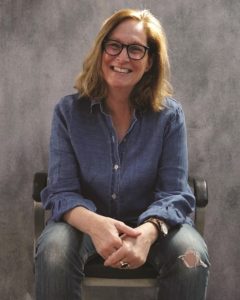“I’ve known women and men — it’s kind of genderless — who think they’re making the right decision, then realize it was one of the worst,” says Provincetown author Randi Triant of what led her to write What We Give, What We Take, her third novel, which was published by She Writes Press in April. “Yet they keep making wrong choices in their lives: stupid decisions with bad consequences. A lot of times, choice — how you decide things — is very complicated.”

What We Give, What We Take is a powerful story with an intriguing literary structure about the relationship between a mother and son, Fay and Dickie Stonewall. It’s narrated by Dickie, who, as a disabled, straight 40-year-old man, is living in Provincetown in the early 1990s. He’s the housemate of Spin, a gay man who Dickie eventually learns has AIDS at a time when it’s almost always fatal.
Dickie starts the story by recalling his adolescence in the 1960s with Fay, a single mom who had him when she was 16. In 1954, when Dickie was two years old and Fay was 18, she took the advice of radio commentator Walter Winchell and didn’t have him vaccinated against polio. He caught the disease, which left him with legs too weak to support himself without crutches. It was one of many poor decisions Fay makes, cursing Dickie’s existence.
Fay works as a carny, a Houdini-like escape artist who gets dropped into a transparent water tank in chains and handcuffs. She’s part of a traveling outfit known as the Amazing Humans, run by an exploitative man named Chuck. Chuck is one of a series of abusive boyfriends that plague Fay (she’s actually most attracted to a fellow female carny named Ginny) as she and Dickie move from place to place. When the troupe goes to Vietnam during the height of the American war there, entertaining troops and wounded South Vietnamese children, Fay impulsively decides to join them, abandoning Dickie, then 15, in Key West. At that point, the novel shifts to third person and follows Fay’s nightmarish experience in Vietnam, which takes up the middle half of What We Give, What We Take.
In the final part of the book, Dickie is again the narrator as he journeys alone to New York City and the artist demimondes of the ’60s, and eventually to Provincetown, where he works at the post office and isolates himself in Spin’s house, bitter and haunted. Despite a circuitous narrative that takes the notion of fate to outrageous lengths, Triant’s novel is told with propulsive energy and engaging prose voices — both Dickie’s and the objective observer of Fay in Vietnam. Its epic conclusion, though hardly joyous, is richly satisfying.
Triant will read from the book and discuss it this Saturday evening at the Provincetown Commons; it’s part of the reception for an art exhibit she helped set up, curated by Dakota X, which features the work of disabled artists, including those living with HIV. Triant, having suffered a good deal of loss in her life — an older brother died at age 34 in a boating accident, and her best friend died of AIDS a few years later — is passionate about what she calls people’s “second lives” as survivors of trauma.
She spent most of her professional life in the health industry in the Boston area, at Children’s Hospital, Tufts, and other employers, working in media and communications, creating educational films, and doing research. Born in Brooklyn and raised on the south shore of Long Island, near Jones Beach, she says that “the health industry may have allowed me to buy homes, but the real impetus of my life was to be a writer, to have a life of letters.”

She wrote short stories, essays, and poetry, took workshops at the Fine Arts Work Center in Provincetown with Dorothy Allison, A.M. Homes, Elizabeth McCracken, and Amy Bloom, and finally decided to go for her M.F.A. in writing at Bennington College. Her first novel, The Treehouse, was published in 2018; her second, a thriller called A New Life, was published last year. What We Give, What We Take was begun 10 years ago, evolving out of a short story about Dickie.
Now in her mid-60s, Triant lives in Provincetown year-round. “My wife is a street photographer,” Triant says. “We both gravitated here because there are so many artists. And I grew up by the beach. The history of the art community is so great.”
She first arrived in 1986. “I came with a group of friends,” she says. “We drove down Commercial Street at midnight. I was floored by the crowds of people who looked so happy. The drag queens, the different groups of people — ‘This is like nirvana!’ It seemed so wonderful at that time. Little did I know that coming down the pike were the years when AIDS would ravage the town.”
Triant says her work is mostly character-driven, and that she’ll mull over the idea for a character during long walks at the Beech Forest or Herring Cove. What interests her is how they respond to tragic developments.
“Everybody has a loss,” she says. “It’s such a huge thing to explore — the psychology of it, how people connect before and then connect again after. As a writer, the sky’s the limit.”
The Son Also Rises
The event: Reading and discussion by author Randi Triant from her new novel, What We Give, What We Take; part of the reception for the art exhibit “What We Give”
The time: Saturday, May 7, 5 to 9 p.m.
The place: Provincetown Commons, 46 Bradford St.
The cost: Free; copies of the paperback, $16.95, are available through East End Books Ptown, eastendbooksptown.com



